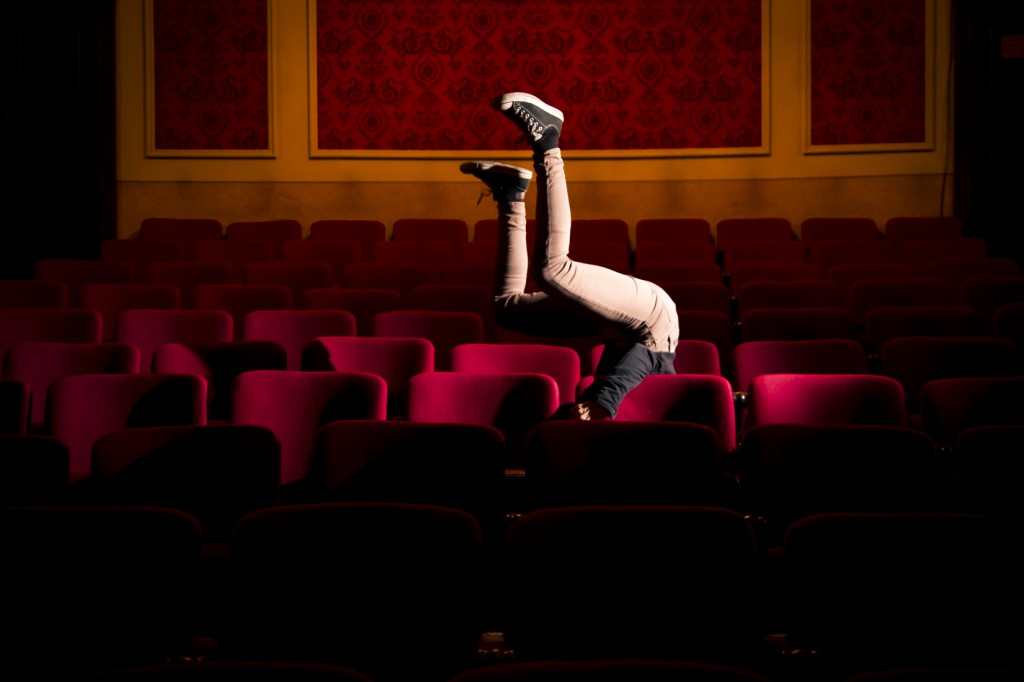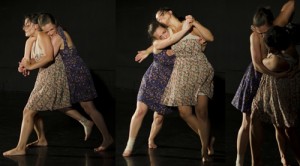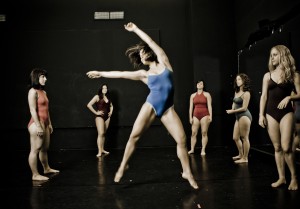by Lizzie Leopold
Ask five people to define dance and you’ll probably get five different answers. Each dancemaker has a personal opinion (or opinions) about how to make steps, what those steps should look like, who should perform those steps, where those steps should be performed, and so on. And there are even those choreographers (Paul Taylor, most famously) who would tell you that you don’t need any steps at all; stillness is dancing too. So then, I’m back at the beginning. What is dance?
One of the common grounds that I keep returning to when trying to tackle this impossible question is audience. All of the disparate genres, venues, styles, and approaches share the act of watching. Sometimes the audience is also the dancer, starring back at herself in the mirror as she simultaneously moves and monitors. Sometimes the audience is 4,000 deep in an opera house. Of course there are exceptions (the private pajama-clad, living room jam session for one); but for this dancemaker there is always an audience.
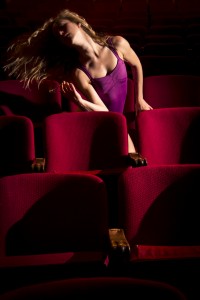 With that idea settled, or at least settling, I can begin to ask myself more pressing questions about this common denominator. Questions like: What does the role of the audience entail? Is there a responsibility innate to the act of watching? What are the different kinds of watching? There is watching to judge and to criticize. And there is watching that works to examine and understand. There is watching without thinking and there is watching with deep, critical engagement. Is there such a thing as gendered, racialized, or sexualized watching? Dance scholars like Susan Manning would tell you yes. They would tell you that who you are, both how you see yourself and how you are seen by society at large, determines how you watch and what you see. They would tell you that the historical moment you inhabit colors your vision. They would tell you that like visual art, there is such a thing as the ‘period eye’ for dance spectators. We are conditioned to watch in a certain way and to see certain things.
With that idea settled, or at least settling, I can begin to ask myself more pressing questions about this common denominator. Questions like: What does the role of the audience entail? Is there a responsibility innate to the act of watching? What are the different kinds of watching? There is watching to judge and to criticize. And there is watching that works to examine and understand. There is watching without thinking and there is watching with deep, critical engagement. Is there such a thing as gendered, racialized, or sexualized watching? Dance scholars like Susan Manning would tell you yes. They would tell you that who you are, both how you see yourself and how you are seen by society at large, determines how you watch and what you see. They would tell you that the historical moment you inhabit colors your vision. They would tell you that like visual art, there is such a thing as the ‘period eye’ for dance spectators. We are conditioned to watch in a certain way and to see certain things.
So how would I characterize a 21st century dance audience? What kind of spectators are we? I believe that today’s audience, first and foremost, wants speed and efficiency. These are qualities that we have come to expect from our world. Technology has rendered us impatient; if a webpage takes more than four seconds to load it is refreshed or abandoned, and if the Lean Cuisine calls for a seven-minute cook time we are annoyed by the wait. So, what is dance’s role in either catering to or subverting this need for speed? I cannot answer that question for you. I can only offer my opinion, as one dancemaker, in one moment. And of course, as my world changes so will my answer. But for now, here is a proposal:
Stage the act of watching. Put the audience on the stage with the dancers so that they watch each other as much as they watch the dancing. Ask your dancers to be better audience members throughout dance work. Identify watching as an act of responsibility, witnessing as an act of humanity. Try to blur the lines between dancing and watching; strive for a place where the differences between the two actions are imperceptible and the similarities are many. Have dancers stare back. Write a to-the-point program note explaining your intentions and your questions, thus feeding the need for efficiency. Now your audience will spend less time ‘re-loading the page,’ having already understood its message. And, all the while, recognize your complicity in this 21st century pacing. Then end the dance slowly and, like the inertia that throws your head forward at the end of the roller coaster, imagine that the globe stutters on its axis momentarily.
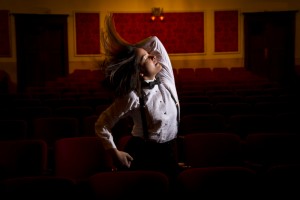 This is just one answer, for one moment. It is the answer that I will stage on March 28-30 at the Ruth Page Center for the Arts. In this instance, as you can tell, I have given into speed and spectacle and I cannot wait to share the results. In the past I have staged slow dances, long dances, dances with closed eyes (of course, a nod to Yvonne Rainer’s pioneering subversion here), and dances without explanation. I watch all of my dances aware that there is no such thing as a neutral spectator or a passive spectator (with the possible exception of my father sleeping through childhood dance recitals).
This is just one answer, for one moment. It is the answer that I will stage on March 28-30 at the Ruth Page Center for the Arts. In this instance, as you can tell, I have given into speed and spectacle and I cannot wait to share the results. In the past I have staged slow dances, long dances, dances with closed eyes (of course, a nod to Yvonne Rainer’s pioneering subversion here), and dances without explanation. I watch all of my dances aware that there is no such thing as a neutral spectator or a passive spectator (with the possible exception of my father sleeping through childhood dance recitals).
And so I humbly ask, next time you enter a theater ask yourself what kind of spectator you are, and what kind of spectator you want to be. What do you see and how do you see it? After all, you, the witness, are a defining factor in the practice of dance and you hold its history in your remembrance.
Tickets for the performance can be purchased here.
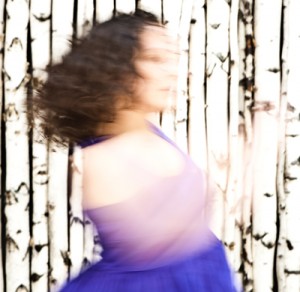
Contributor Lizzie Leopold is a dancer, dance maker and dance scholar. She holds a BFA in dance from the University of Michigan and a Masters in Performance Studies from New York University’s Tisch School of the Arts, with thesis work titled Choreography and Commerce: Tracking the Business of Dance Through the Rite(s) of Spring . In fall 2011 she will begin work on an Interdisciplinary PhD in Theater and Drama Studies at Northwestern University, continuing to focus on the intersection of dance and business, both historically and theoretically. Her writing has been presented at the Congress on Research in Dance 2011 Special Topics Conference, Dance and American Studies, and the Cultural Studies Association Conference 2011. She is also a contributor to the Auditorium Theatre of Roosevelt University blog writing about their dance performance series.
Lizzie is the founder and Artistic Director for the Leopold Group, a Chicago based not-for-profit modern dance company. She was awarded Best Choreography for Green Eyes, a new kind of musical in the 2008 New York International Fringe Festival and has been in residence at the Workspace for Choreographers’ Artists Retreat in Sperryville, Virigina and at the Chicago Cultural Center through DanceBridge. In addition to choreographing, Leopold has danced with the Lyric Opera of Chicago. She also works for Audience Architects (www.audiencearchitects.com, www.seechicagodance.com) , a service organization working to build audiences for dance in Chicago, and is working to launch the New Books Network Dance Channel podcast. She currently serves on the Alumni Board of Governors at the University of Michigan’s School of Music, Theater and Dance.





